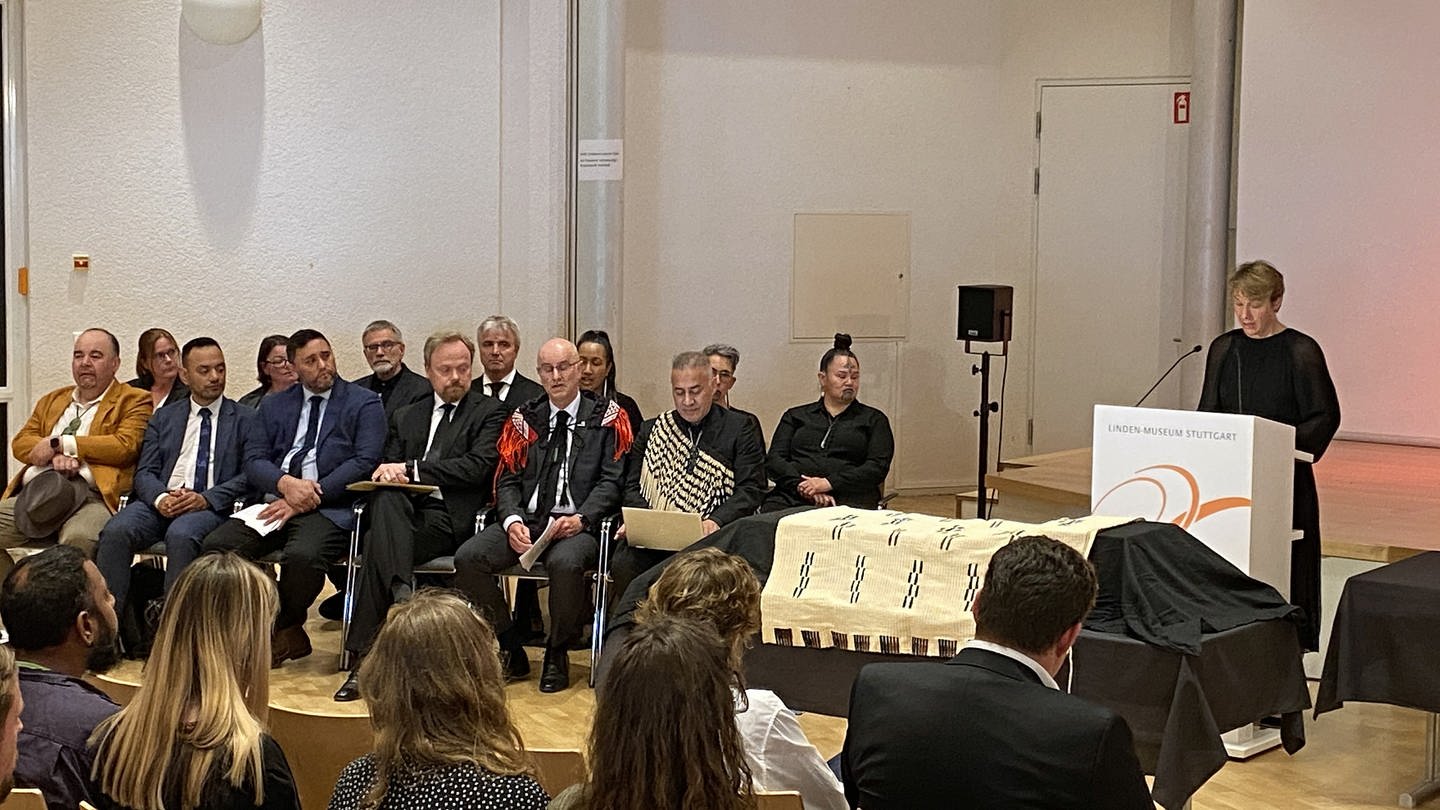
BW brings human skulls back to New Zealand – SWR Aktuell
During the colonial period, the Germans not only stole cultural assets – they also brought human skulls to Germany. Some were returned to Stuttgart on Tuesday afternoon.
With a solemn ceremony in Linden Museum Stuttgart The state of Baden-Württemberg has returned the remains of the ancestors of the Maori and Moriori to New Zealand. The Ministry of Science announced Tuesday in Stuttgart that the three human skulls and ceremonial tableware made from human bones were part of the collections of the Stuttgart State Museum of Natural History and the Linden Museum. It was sent to representatives of the Maori community and National Museum of New Zealand, Te Papa Tongarewa, is back.
Maori are the indigenous people of New Zealand. Moriori lived on islands a few hundred miles east of New Zealand.
Download video (14.3 MB | MP4)
Minister: Baden-Württemberg is fulfilling its historic responsibility
“Finally we can return the remains of our ancestors to where they belong,” said Te Hirkiki Hireweni of the National Museum, according to the text of the speech. Despite the long time that the human remains were not connected to their homeland, their cultural connection remains “through the passage of time and distance”.

In a solemn ceremony, the state of Baden-Württemberg has returned Maori human remains to New Zealand at the Linden Museum in Stuttgart – covered in a white cloth.
SWR
With the return, the state is fulfilling its historic responsibility, Baden-Württemberg Minister of Science Petra Olschowski (The Greens) explains. It is also very important for her personally to return “the many human remains that were stolen from areas of former colonialism without the consent of relatives or even by force.” For the director of the Linden Museum in Stuttgart, Ines de Castro, returning to New Zealand is an important step in dealing with colonial injustice.
The National Museum of New Zealand here shows a ceremony where the human remains arrived from Vienna:
More museums are bringing back human remains
The ceremony was part of a larger initiative to bring ancestors back to New Zealand from German museums. Three mummified heads of Maori ancestors were returned from the Ries-Engelhorn museums in Mannheim to New Zealand on Friday. Under the direction of Te Herekiekie Herewini of the National Museum of New Zealand, human remains have also been returned to New Zealand from the Grassi Museum in Leipzig, the University of Göttingen, the Römer and Pelizaius Museum in Hildesheim and the Museum in Wiesbaden.
According to the current state of knowledge, all the human remains of the Maori ancestors were returned to representatives of their native country New Zealand at a ceremony in Stuttgart. An important step, according to Olszczowski: “It restores dignity to people and ancestors. And it gives us the opportunity to define: these are not things that have been analyzed from a scientific point of view, but ancestral ones. And there is a vision outward, we want that return where it wants it.”
Reiss-Engelhorn Museums returned Maori chiefs to a delegation from New Zealand in a ceremony on Friday. The Mannheim City Council decided so.
Contacting non-humane research with racist motives
In the fall of 2022, the Te Papa Tongarewa National Museum contacted the Baden-Württemberg Ministry of Science, Research and the Arts with a request to transfer human remains from the state’s collections to New Zealand. According to the Ministry of Science, these groups arrived in Baden-Württemberg and the groups in very different ways between 1885 and 1956. This was often associated with racially motivated non-human research. Their aim was to group people into different classes based on skin color or skull shape, postulate stages of evolution and substantiate an alleged hierarchy of human “races”.
The ancestral chiefs of the “Tui moko” played and continue to play an important role in the spiritual world of the Māori. In the eighteenth and nineteenth centuries, they became a coveted commodity. As looted goods, they found their way to European museums in a roundabout way. With the arrival of Europeans, the natives began to proselytize – the language and religion of the natives were banned. Most of the population converted to Christianity at that time. Meanwhile, young Māori and Moriori are rediscovering the ancient traditions of their people. Maori has been New Zealand’s second official language since 1987. Maori’s spiritual connection to the land carries with it a commitment to respect all life back home.
As early as April 5, the country returned the human remains of the Native Hawaiians.

“Coffee trailblazer. Social media ninja. Unapologetic web guru. Friendly music fan. Alcohol fanatic.”
